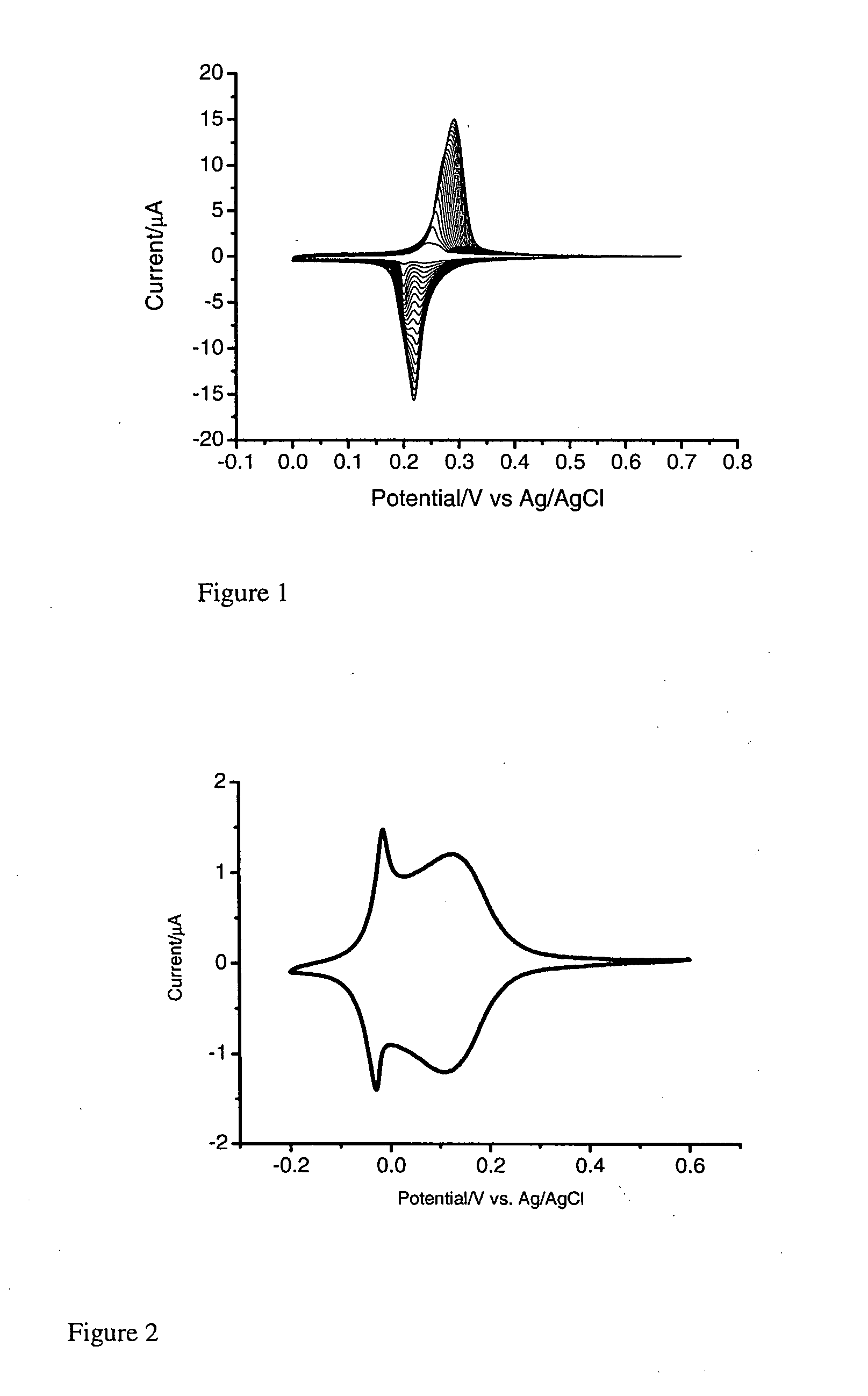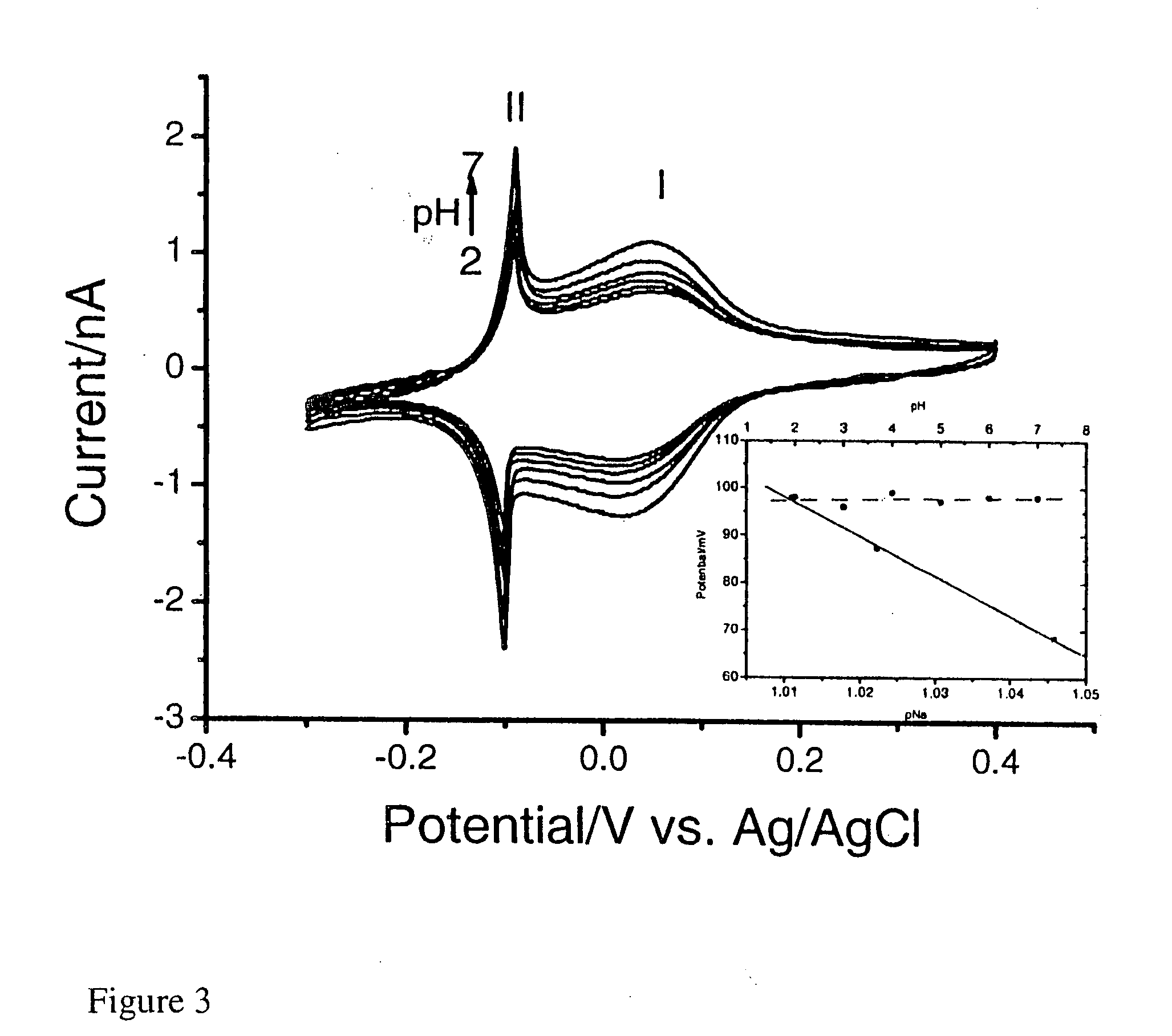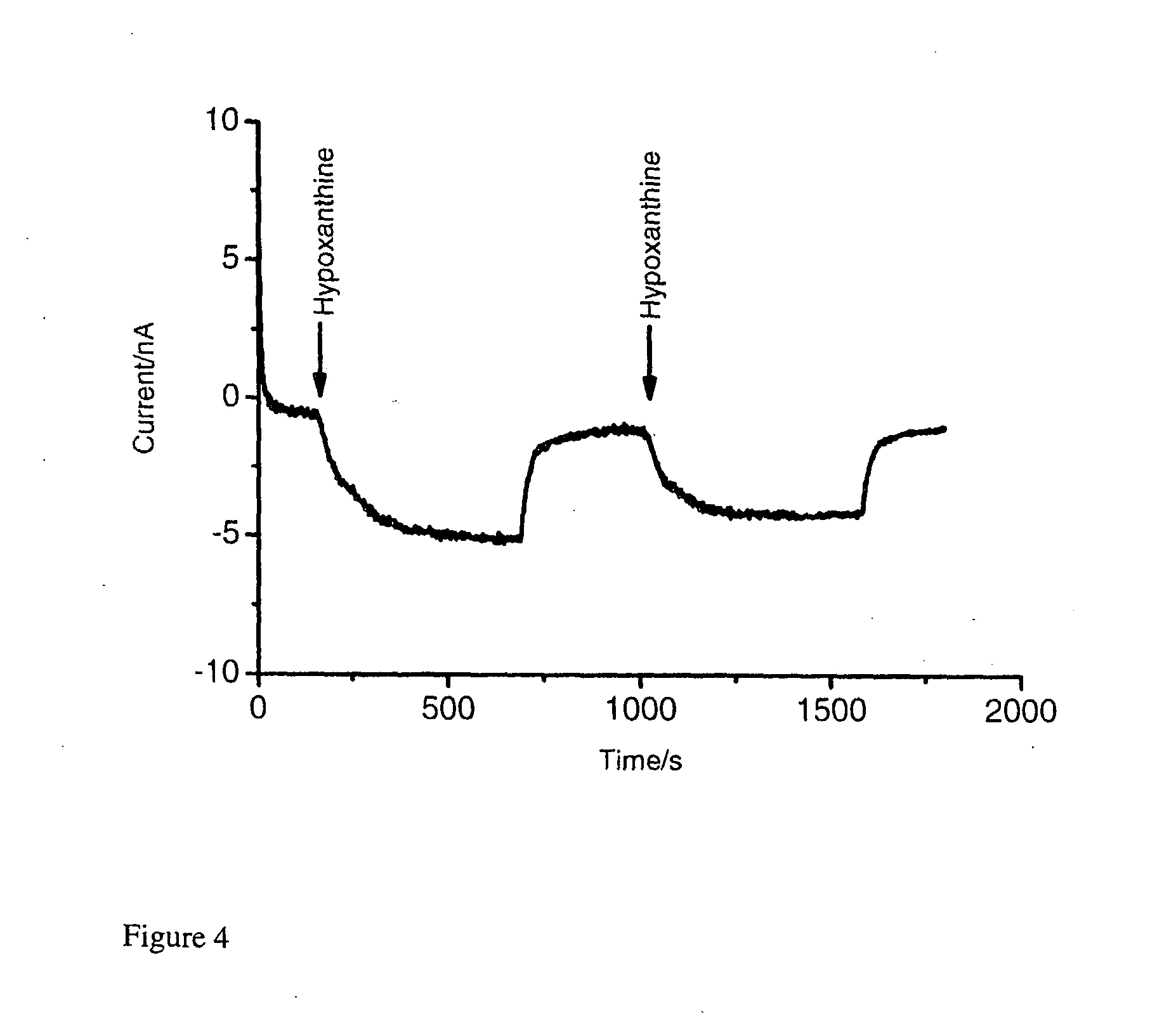Ruthenium purple biosensor
- Summary
- Abstract
- Description
- Claims
- Application Information
AI Technical Summary
Problems solved by technology
Method used
Image
Examples
Embodiment Construction
[0168]Apparatus
[0169]A CH1 660B potentiostat was used to electrochemically deposit the different polymers and test the biosensor. The biosensor was used in vivo with a potentiostat interfaced to a PC by an A to D converter board (Data Translation). In all cases an Ag / AgCl was used as reference electrode and a Pt counter electrode. The electrochemical cell for deposition consisted of a capillary of 1.5 mm diameter and 2 cm length.
[0170]Electrodeposition of RP on the Surface of a Gold Electrode:
[0171]In a three electrode system, a pre-treated working gold electrode is dipped into a mixture (FeCl3 (1 mM)+KCl (40 mM, pH 2) and K4Ru(CN)6 (1 mM)+KCl (40 mM, pH 2), followed by electrochemical cycling from −0.2 to +0.7 V (vs. Ag / AgCl) for forty cycles at 50 mV / s (FIG. 1). The resulting RP modified electrode is heated at 80° C. overnight. In order to stabilise the RP membrane, electrochemical cycling is performed in a solution of RuCl3.
[0172]Polyaniline, where used, was formed using 10 μm an...
PUM
| Property | Measurement | Unit |
|---|---|---|
| Temperature | aaaaa | aaaaa |
| Temperature | aaaaa | aaaaa |
| Electrical conductivity | aaaaa | aaaaa |
Abstract
Description
Claims
Application Information
 Login to View More
Login to View More - R&D
- Intellectual Property
- Life Sciences
- Materials
- Tech Scout
- Unparalleled Data Quality
- Higher Quality Content
- 60% Fewer Hallucinations
Browse by: Latest US Patents, China's latest patents, Technical Efficacy Thesaurus, Application Domain, Technology Topic, Popular Technical Reports.
© 2025 PatSnap. All rights reserved.Legal|Privacy policy|Modern Slavery Act Transparency Statement|Sitemap|About US| Contact US: help@patsnap.com



